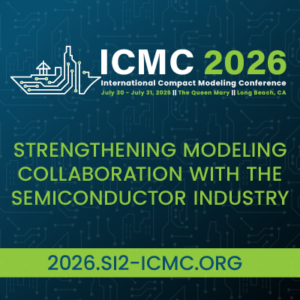
On July 9, 2025, a DACtv session by Dr. Peter Levin explored the transformative impact of artificial intelligence (AI) on chip design, as presented in the YouTube video. The speaker, an industry expert, delved into how AI is reshaping electronic design automation (EDA), addressing the escalating complexity of modern chips and the need for innovative tools to maintain pace with market demands. The talk highlighted AI’s role in optimizing design workflows, enhancing productivity, and tackling challenges like power efficiency and time-to-market in the semiconductor industry.
The semiconductor landscape is undergoing a seismic shift, driven by AI’s integration into design processes. With chip complexity soaring—modern systems-on-chip (SoCs) now encompass billions of transistors—traditional EDA tools struggle to keep up. The speaker emphasized that AI, particularly machine learning (ML) and large language models (LLMs), is revolutionizing tasks like synthesis, placement, routing, and verification. For instance, AI-driven tools can predict optimal circuit layouts, reducing iterations and accelerating design cycles by up to 30%. This is critical as time-to-market pressures intensify, with the global semiconductor market projected to reach $1 trillion by 2030, fueled by AI, IoT, and 5G.
A key focus was AI’s ability to enhance productivity. By automating repetitive tasks, such as generating testbenches or optimizing power consumption, AI frees engineers to focus on creative problem-solving. The speaker highlighted tools like reinforcement learning-based optimizers, which iteratively improve chip designs by learning from simulation data, achieving up to 15% better power-performance-area (PPA) metrics compared to manual methods. These advancements are vital for AI accelerators, where high computational throughput and energy efficiency are paramount, as seen in chips powering generative AI models.
The talk also addressed challenges in adopting AI-driven EDA. Legacy workflows, often reliant on outdated tools like Perl scripts or manual verification, hinder scalability. The speaker advocated for modernizing IT infrastructure to support AI tools, citing the need for cloud-based platforms with scalable compute resources. IBM’s EDA-as-a-Solution and similar platforms were referenced as examples, enabling hybrid cloud workflows that integrate on-premises and cloud resources for seamless bursting during peak design phases. This approach mitigates compute shortages, a bottleneck as AI workloads demand massive parallelism.
Sustainability emerged as a critical theme. AI data centers consume gigawatts, raising environmental concerns. The speaker stressed designing energy-efficient chips, leveraging AI to optimize power at the architecture level. For example, AI-driven thermal modeling can reduce hotspot issues in 3D chiplet designs, improving reliability and cutting energy use by 10-20%. Collaborative efforts with foundries to integrate process design kits (PDKs) into AI workflows ensure manufacturability, aligning with sustainability goals by minimizing waste during fabrication.
In response to audience queries, the speaker addressed integrating AI into academic research, suggesting federated learning to overcome limited dataset access. This approach allows universities to train models locally while aggregating insights globally, protecting intellectual property. The session underscored the need for industry-academia partnerships to cultivate talent, echoing initiatives like NYDesign’s experiential learning programs to inspire young engineers.
The presentation concluded with a forward-looking vision: AI is not just a tool but a catalyst for redefining chip design. By enhancing EDA with AI, the industry can tackle complexity, improve efficiency, and drive sustainable innovation. The speaker urged attendees to embrace this paradigm shift, leveraging the “brain power” at DAC to shape a future where AI and semiconductors symbiotically advance technology.
Also Read:
IBM Cloud: Enabling World-Class EDA Workflows
AI Infrastructure: Silicon Innovation in the New Gold Rush
Large Language Models: A New Frontier for SoC Security on DACtv
Share this post via:









Quantum Computing Technologies and Challenges